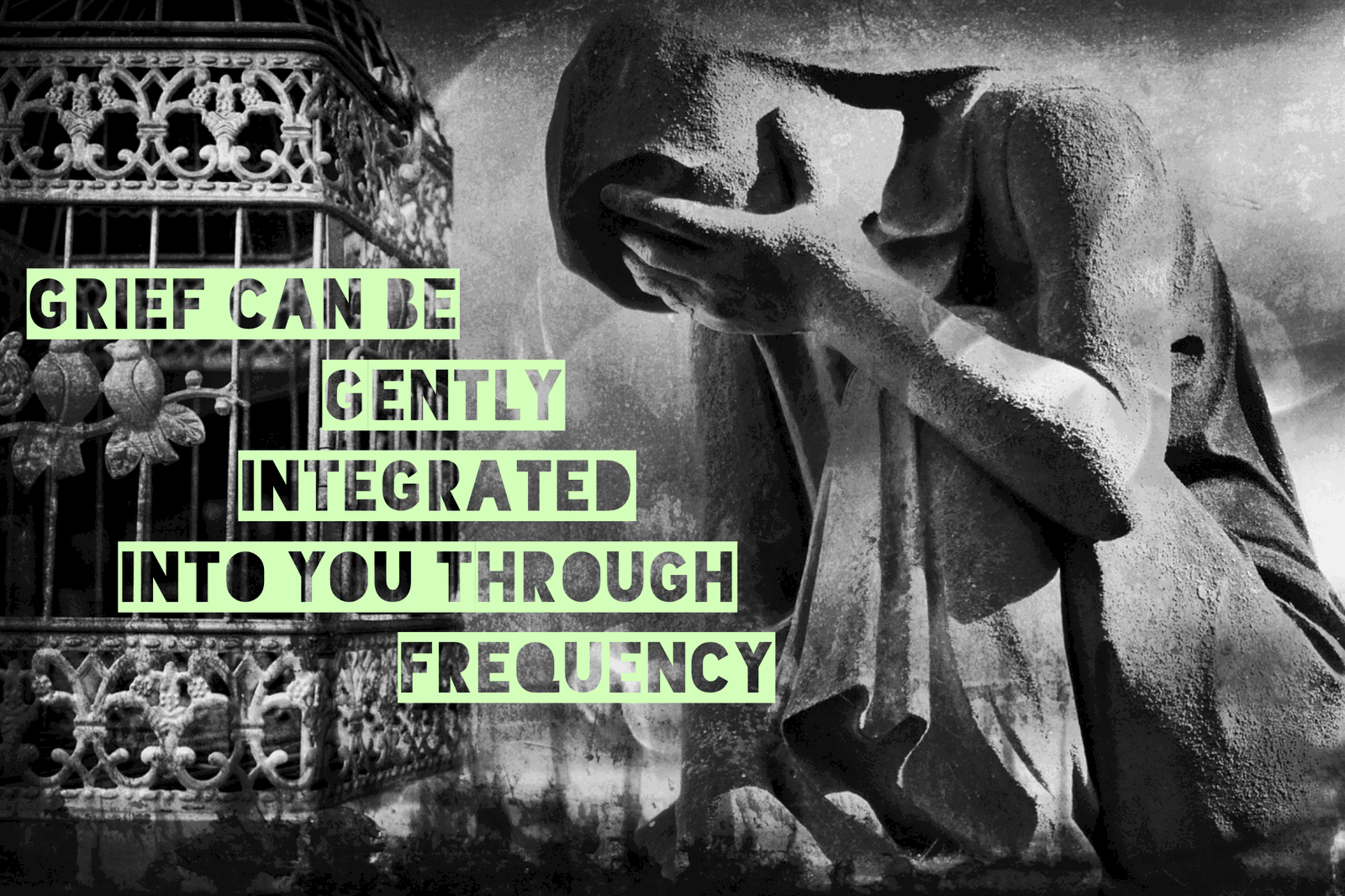Grief is a universal experience that touches every person at some point in their life, yet it remains one of the most misunderstood and least talked about emotions in our culture.
While we are comfortable discussing love, anger, and even joy, we shy away from grief, leaving it in the shadows, unspoken and often unresolved. This reluctance to confront grief, to sit with those who are grieving, and to offer the emotional space necessary for healing, creates a culture of avoidance and discomfort around one of the most profound human experiences.
The Frequency of Grief: An Ever-Present Vibration
Grief is not something we “get over.” It does not have a clear beginning or end. Rather, it has a frequency, a vibration that becomes part of who we are. Just as sound has its own resonance, grief pulses through us in waves, sometimes loud and overpowering, other times faint and barely noticeable. But it never fully disappears. Instead, it weaves into the fabric of our lives, altering our perception of the world and deepening our emotional landscape.
As we integrate grief, it changes in texture, softening over time but always remaining with us. Sound healing using the frequency of grief, can aid tremendously with the integration process by aiding in the softening of the texture of grief. This is not to suggest that grief is something to be feared or avoided, but rather something to be acknowledged and even embraced. The frequency of grief, when allowed space to resonate, can bring with it profound insights, deeper compassion, and a greater sense of connectedness to ourselves and others.
Creating a Safe Container for Grief
To fully process and integrate grief, we need a safe container—an emotional and physical space where we can soften into our pain without judgment or pressure to “move on.” A group or Sound Bath & Meditation with this as its theme has been shown to offer a sensitive space for people with grief to find support. This container might look different for each person. For some, it may be found in therapy or counseling. For others, it might be through creative expression, meditation, or rituals that honor the loss. It may also involve community support, but not necessarily in the traditional ways we imagine.
A safe container for grief is not a place where solutions are offered, but where the griever is witnessed. It’s a space where the complexity of grief is allowed to unfold—where tears, silence, anger, and confusion are equally valid. Creating such a container requires patience and gentleness, both from ourselves and those who support us. It requires us to give permission for grief to move through us in its own time and its own way, without forcing an outcome or timeline.
Grief in Our Culture: The Discomfort of Loss
As a society, we are profoundly uncomfortable with grief. We often don’t know how to respond when someone we love is grieving, and in our discomfort, we may inadvertently say things that hurt rather than help: “You’ll get over it in time,” or “They’re in a better place,” or “At least you still have (something else).” These well-meaning statements stem from our deep-seated discomfort with grief and the need to fix what we perceive as broken.
But grief is not something to be fixed. It’s a natural, human response to loss. Our cultural discomfort with grief only amplifies the isolation that many people feel when they are mourning. We need to challenge this discomfort, just as we’ve learned to challenge other taboos. Just as we’ve become more comfortable discussing emotions like anger or love, we need to make space for grief in our conversations, our workplaces, and our daily lives.
Part of this shift involves normalizing grief. We must learn to see grief not as an unfortunate detour in life’s journey, but as an integral part of the human experience. Loss, whether through death, illness, or other life changes, is inevitable. Yet the stigma attached to grief can make us feel like it’s something to hide, something to deal with in private, or something to move past quickly.
Expanding Our Understanding of Grief
Grief is most commonly associated with the death of a loved one, but it can stem from many other sources as well. The loss of health, a diagnosis of chronic illness, the loss of a job or career, the end of a significant relationship, the loss of identity or purpose—all of these can bring about profound grief. We may even grieve parts of ourselves that we feel are no longer accessible: our youth, our dreams, or our former selves.
Each type of loss carries its own weight, but the emotional response—grief—remains consistent. What often differs is the recognition or validation of that grief. For instance, people who are grieving the loss of health or identity may not receive the same support as someone who is mourning the death of a loved one. Their grief may be minimized, overlooked, or misunderstood. Yet, these losses can be equally devastating, altering the course of a person’s life in profound ways.
We need to broaden our definition of grief to include these less visible forms of loss. By doing so, we can create a more compassionate and supportive environment for those who are navigating life’s inevitable changes. We must also learn to acknowledge the ongoing nature of grief. The idea that grief has a neat “resolution” or endpoint is a myth. Grief becomes part of who we are, and just as we evolve, so too does our relationship with it.
Allowing Space for Grief
To truly honor grief, we must allow space for it in our lives and in the lives of those around us. This means learning to sit with discomfort, both our own and others’. It means letting go of the need to fix or rush the process of mourning. It means recognizing that grief, like love or anger, is an essential human emotion that deserves to be felt and expressed.
Creating space for grief involves changing how we interact with it, both individually and collectively. We can start by becoming more comfortable with the silence that often accompanies grief, by listening without offering solutions, and by accepting that grief is not linear. Some days will feel lighter, and others heavier, but the presence of grief does not mean something is wrong.
When we give grief the space it needs, we also open the door to healing. We allow ourselves to integrate the loss into our lives, not as something that diminishes us, but as something that shapes us into deeper, more compassionate individuals. Grief never truly goes away, but by honoring its presence, we learn to carry it with grace and resilience.
Conclusion: Integrating Grief into Our Lives
Grief is an experience that changes us. It softens us, deepens us, and becomes part of who we are. As a culture, we must learn to make space for grief, to treat it with the same respect and understanding that we give to other emotions. Whether we are grieving the loss of a loved one, our health, or a piece of ourselves, we must learn to honor the process without rushing it or minimizing its impact.
By creating safe containers for grief, we can allow ourselves and others to process loss in ways that feel authentic and meaningful. And by understanding the frequency of grief—its constant but evolving presence—we can integrate it into our lives as a force that, while painful, also brings wisdom and healing.
Are you working through grief? Would you like to host me for a Sound Bath & Meditation for Grief & Loss? Please contact me at: dorothyfrmkansas@gmail.com







